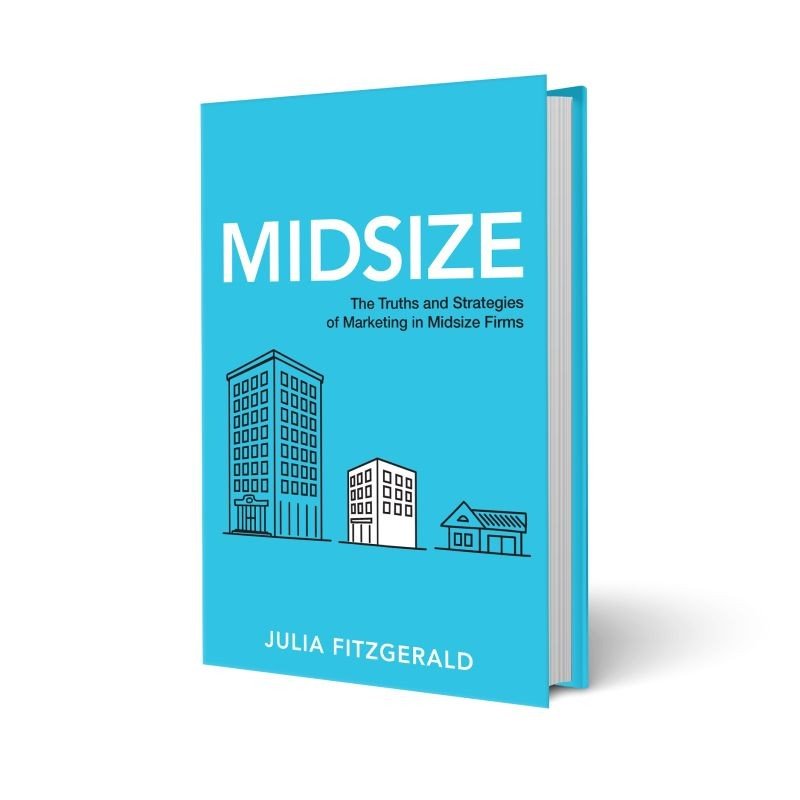Feature on CMO Room: Insights from Julia Fitzgerald, Chief Marketing Officer, Author, and Business Advisor
This article was originally featured by CMO Room.
"Let's work through it over a bowl of M&M's," Julia Fitzgerald, Chief Marketing Officer of the beloved Build-A-Bear brand, would often say, transforming tense boardroom discussions into collaborative brainstorming sessions.
This simple yet effective approach perfectly encapsulates her leadership style - approachable, innovative, and deeply invested in bringing out the best in her teams.
Are great leaders a product of nature or nurture?
When it comes to Julia Fitzgerald, the answer poses an intriguing question. She possesses innate leadership qualities - true vision, a sharp intellect, decisiveness, endless curiosity - that it's easy to overlook the talents she has honed throughout her remarkable career as a CMO. This blend of natural ability and deep expertise has allowed Julia to build high-performing teams that drive transformative growth.
In this edition of CMO Insights, we are honored to learn from Julia Fitzgerald's remarkable journey as a CMO.
From her early career sparking imagination through toys and games, to her current role as a trusted advisor and mentor, Julia's story is one of vision, adaptability, and an unwavering commitment to leadership excellence.
Julia has navigated some of the most iconic brands across diverse industries from igniting children's creativity at VTech to her transformative work at Build-A-Bear Workshop.
Her ability to deftly guide retail giants like Sears and Kmart, education powerhouses such as Sylvan Learning, and mission-driven nonprofits like the American Lung Association, is a testament to her strategic mindset and customer-centric approach.
As a thought leader in AI's applications for marketing, Julia embraces this technology to revolutionize personalization, customer insights, and content creation. Her ability to seamlessly blend innovation with time-honored marketing principles is a key driver of her success.
Her passion for nurturing marketing excellence extends far beyond the boardroom through initiatives like her bestselling book, Midsize: The Truths and Strategies of Marketing in Midsize Firms, and her Midsize Agency Match Up program connecting CMOs with exceptional agency partners.
Get ready to be inspired by her insights, her collaborative spirit, and who knows - you may even indulge in an M&M or two along the way.
In your career, you have been CMO of several well-known brands and companies – and in a variety of business models. How do you successfully move between different business models?
Fitzgerald: Good marketing is very transferable across business models, and it all starts with an unrelenting customer focus. Over the years, I have been able to take consumer and industry details from one environment and apply it to other business categories.
For example, after years in the toy industry and at Learning Toy Company, Vtech, I was able to bring that knowledge to Sears/Kmart as the CMO of their Toy and Sporting Goods businesses. From there I was recruited to Sylvan Learning as their CMO.
For the hiring team at Sylvan, Vtech Learning Products + Retail = exactly the digital mindset they needed to grow their business. So I moved from consumer products, to retail, to private equity portfolio/franchise business model.
Your most recent CMO role was at Build-A-Bear – and a return to the toy industry for you. With such a beloved, multi-generational brand, what’s the key to maintaining Build-A-Bear's core value proposition while evolving it to stay culturally relevant, especially with adult fans?
Fitzgerald: Build-A-Bear's core value is adding more heart to life, a mission it has upheld for over 25 years. This beloved, multi-generational brand now appeals to adults who cherished it as children, while the experience of creating furry friends continues to engage their own children.
With the rise of 'kidulting' and a nostalgic yearning for brands from their youth, Build-A-Bear faces the exciting challenge of delighting today's children and families, as well as Gen Z, who purchase for themselves and their friends
Omnichannel marketing is key to achieving this. Social media and influencers play a crucial role in inviting Gen Z into the stores for events like date nights, friendship days, and the latest Capybara drop. Additionally, the website offers "The Bear Cave," a space dedicated to over-18 fans where they can find humorous and unique furry friends and accessories.
The "The Stuff You Love" campaign seems to be a comprehensive branding refresh aimed at reinforcing Build-A-Bear's emotional connection across channels. What was the strategic insight that drove this new creative platform and positioning?
Fitzgerald: The strategic insight behind the "The Stuff You Love" campaign was recognizing that Build-A-Bear's total addressable market had significantly expanded. No longer just a destination for young children's birthday parties and special occasions, Build-A-Bear saw the opportunity to evolve all channels to be fresh, relevant, and inclusive of teens, tweens, and adult fans.
"The Stuff You Love" is the perfect brand campaign because it resonates with all of the company's products, channels, and fan segments. Its fresh appeal in stores, advertising, and owned platforms reminds kids of all ages to re-engage with "The Stuff (pun intended) You Love."
Ha! Love it. A little over a year ago you published a book, Midsize, the truths and strategies of marketing in Midsize firms. Congratulations!
Can you tell us a little about the book and what you consider a midsize firm?
Fitzgerald: I published Midsize as a playbook for successful marketing in midsize firms. I define a midsize firm as one with revenues between $100 million and $800 million. Having worked in both midsize companies and large corporations, I recognized that the critical skill sets and mindsets vary significantly depending on the company size. I've had a great deal of success in midsize firms and I thrive on driving growth in environments that are scrappy, collaborative, and full of potential. The book was a share out, and a collection of stories from a variety of CMOs in the space.
An unexpected and delightful surprise has been hearing from several young marketers who found that Midsize helped them understand what types of companies they want to work for as they build their careers.
That's incredible! You are certainly a great advisor in the industry.
After your recent OpEd in Ad Age about agencies and midsized brands, you seem to have uncovered a need in the marketing world. What is going on now with your Midsize Agency Match Up campaign?
Fitzgerald: Following the publication of my book Midsize, I wrote an Op-Ed for Ad Age highlighting the need for a forum where CMOs of midsize companies can find great agency partners that fit their needs and budgets.
The response was overwhelming, apparently revealing a significant gap in the marketing world. Inspired by this, I launched my own "Midsize Agency Match Up" campaign.
Each week, I highlight an agency that I've vetted as a "Midsize Match Up" and publish it in my LinkedIn Newsletter. This initiative ensures that at least 50 agencies a year gain extra visibility.
I started with creative agencies and am now expanding to digital agencies as well. It's been a joy to meet these incredibly talented individuals and grow my network of exceptional talent. I encourage everyone to subscribe to my Newsletter – it's free! As you never know when you will need an agency for a particular task. It's a great resource.
So true, and vetting agency partnerships can be such a cumbersome, drawn out process.
Speaking of deals, with some of the summer movie blockbusters off to a slow start, what impact does that have on toy sales and other licensed merchandise? What should CMOs be thinking about as they write licensing deals for 2025 and beyond?
Fitzgerald: This is a great crystal ball question. Most licensing deals for these entertainment properties are inked a year in advance. And for companies designing and manufacturing products overseas, calling the forecast number is a big risk. Based on what we saw this year, I'd be more bullish with evergreen licenses that the kids watch all year over and over. I'd also look for deals with low minimum guarantees to help share the risk uncertainty.
We really can't have a conversation without raising the topic on every CMO's mind – and that's how to best utilize AI in the marketing stack and customer communications?
Fitzgerald: AI will be key in so many areas – but the 3 that stand out for me are personalization within the customer journey, gleaning customer insights, and content creation.
While there is a lot of conversation about using AI within digital marketing, that does not seem especially new within the media world. Machine learning and algorithm optimization have been in use for the past several years. It will just continue to accelerate. We will quickly learn how much repetitive work can be handled by AI and what that means for training marketing staff to excel with these new tools.
I completely agree; now that AI has been unleashed to the masses for any use case we can imagine, it's crucial to have advisors like you to educate, drive adoption, and navigate the path forward.
Lastly, any advice or learnings to offer for current or prospective CMOs heading up an iconic, household name brands?
Fitzgerald: For current or prospective CMOs leading iconic, household name brands, my advice is to balance respect for the brand's heritage with the need for innovation. Here are a few key learnings from my experience:
Stay True to Core Values: The foundational values that built the brand's reputation must remain intact. These values are the heart of the brand and resonate deeply with loyal customers. (As I referenced with the Build-A-Bear example)
Embrace Change and Innovation: While respecting tradition, it's crucial to evolve with the times. Innovate to stay culturally relevant and meet the changing needs of your audience. This can involve new products, digital transformation, or fresh marketing strategies. Social media is a great channel to achieve this goal.
Know Your Audience: Understand the diverse segments of your audience and their unique preferences. For iconic brands, this often means appealing to multiple generations simultaneously. Tailor your messaging and channels accordingly.
Leverage Data and Analytics: Use data to inform your decisions. Insights from data can help you understand market trends, customer behavior, and the effectiveness of your campaigns, enabling you to make strategic adjustments.
Build a Strong Team: Surround yourself with a talented, creative, and motivated team. Encourage collaboration and foster a culture where innovative ideas can flourish.
Leading an iconic brand is a unique privilege and responsibility. Balancing tradition with innovation while staying deeply connected to your audience will help you steer the brand towards continued success.
Good luck!






